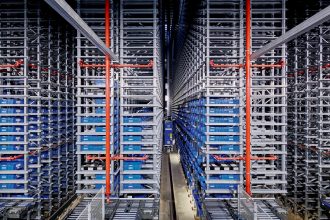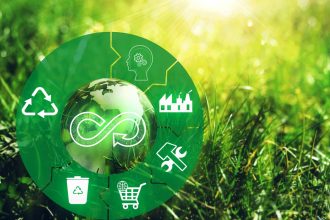Achieving ROI with Advanced Power Sources

Sustainability gains can help you achieve an ROI with advanced power sources.
One of the common misconceptions when it comes to investing in advanced power sources like lithium-ion (li-ion) batteries is that achieving a return on investment (ROI) can be a long process. There are several factors that come into play, however, that make the ROI equation faster than you may realize. One of those factors is sustainability.
To best understand how sustainability can translate into an ROI, it’s helpful to frame the equation into how effectively you can reach your ESG (environmental, social and governing) targets. More and more corporations are setting ambitious ESG targets these days, and achieving them means reducing their carbon footprint. One of the ways to get there is by transitioning away from propane and lead-acid batteries toward li-ion.
Several jurisdictions throughout the United States and Canada support ESG efforts through incentive programs, which can ease the path and increase the time to ROI. For example, both California and Oregon offer the Low Carbon Fuel Standard (LCFS), which serves as a market-based incentive program to reduce the carbon intensity of transportation fuels. It’s worth your while to see if your state or jurisdiction offers a similar program.
When you consider li-ion’s sustainability benefits, you can look for them in several places. They require up to 41 percent less energy from the grid to perform the same amount of work, which translates into lower emissions and a smaller electric bill. The life cycle can reach as high as 3,000 cycles (compared to 1,500 for lead-acid batteries), which also contributes to ROI from a sustainability standpoint, because replacement comes at a later time. When a li-ion battery can no longer sustain the intensity of the application for which it was designed, it can be repurposed into a less demanding application. Ultimately, at the end of a li-ion battery’s life , recycling processes are available and are 95 percent efficient, allowing third parties and OEMs to produce battery grade materials from the process.
For those companies interested in making the transition to advanced energy solutions, a look into the Global Battery Alliance’s “battery passport” program is worth consideration. Serving as a digital twin to the physical battery, companies can utilize the passport to demonstrate their efforts and gains with sustainability. This can be a selling point on the ESG front.
While li-ion offers up a power source for today and the future, there are also still ways where lead-acid fits into the overall picture and can provide nearly a 100% recycling rate. If your operations are less demanding on energy output, this might be the path to take for the near future. In a more intense application that features two work shifts, the ROI from li-ion might be the better solution. In all cases, a power study of the application is recommended before transitioning.
Sustainability is a piece of the puzzle when it comes to achieving ROI on advanced energy solutions, however, sustainability alone isn’t usually the reason for transitioning away from traditional power sources. Instead, consider sustainability as one part of the overall lifecycle of batteries and establish good practices. At comparable costs, a more sustainable solution might be chosen by companies willing to absorb the cost and effort of changing technology.
In the end, sustainability in any arena benefits OEMS, customers, and the market as a whole.
Source: JF Marchand, UgoWork
For more information about the Advanced Energy Council: mhi.org/aec
For further articles from the Advanced Energy Council:
Advanced Power ROI: Efficiency



